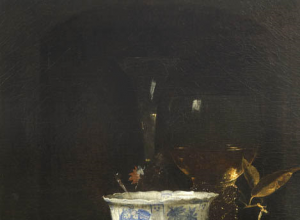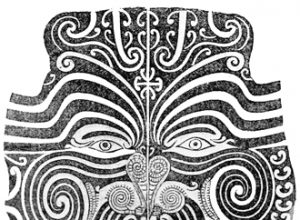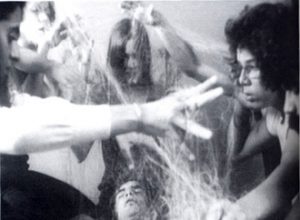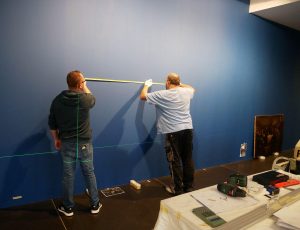
A work of art is only active if a certain number of conditions are met, implying the collaboration of various actors, not least the public. Alexis Anne-Braun raises here the question of restorative practices in art, as well as the ethical issues they present, through the concept of artistic activation found in the writings of American analytical philosopher, Nelson Goodman. At the same time, he also invites us to be wary of a utilitarian conception of art that would have it be predictable in its effect upon us.
Laurence Bertrand Dorléac and Thibault Boulvain
Alexis Anne-BraunRepairing works, repairing people. Activations and restorative practices.
Putting the work to work
In a 1992 lecture at the Musée National d’Art Moderne, Nelson Goodman argued that a work of art needed to be ‘activated’ to fully function as a symbol. “A work of art is what it does” – and among what it does is, of course, what it does to us. Yet no work is guaranteed to function fully in all circumstances and on all occasions. In order to do so, certain conditions must be met – independent of the components that enter into the production or the execution of the work. These conditions of activation can vary: the lighting, the arrangement in the space, the pedagogical material surrounding the work, the conservation of its original state, its possible restoration or even its emotional activation by artists, museum bodies, or by spectators. Putting a work to work, therefore, requires the collaboration of various actors – including the public.
Truthfully, in the dark and exposed to the dim light of emergency exits, no museum work functions properly. This is not, in the absence of an audience, a catastrophe. It becomes so when any aesthetic experience is systematically impeded or cancelled because certain conditions are not met: either the artists’ prescriptions are not respected, or a particular hanging arrangement spoils the functioning of juxtaposed works, or too bright a light prevents the work from being seen or is incidentally reflected on the protective glass or varnish. In a series of articles, Goodman also acknowledged in a series of articles that the museum space is far from optimal: curators and museum directors must work to overcome both public blindness, i.e. the public’s inability to fully grasp the works (the power they have to transform our vision of the world), as well as the constraints placed on institutions, to do with their finances, their political guardianship, the narrowness of their walls, and the need to protect the works from the public.

fig. 1 : View of the exhibition “Prendre Soin”, at the Museum of Fine Arts of Dole, un 2022. © Alexis Anne-Braun.
No doubt these ideas will seem trivial to people who have devoted their lives to these questions but to me these observations are refreshing, given the literature available, generally mobilized and commented upon in the field of analytical philosophy. Nelson Goodman did not have the time to draw all the philosophical consequences from this concept of “artistic activation”: 1) consequences for his own theory of symbols; 2) consequences for his ontology of the work of art; 3) consequences as to the role the philosopher can or must play in the art world to settle conflicts caused by the demands made on the works.
The museum director and the age-old puzzle
Indeed, one of the unresolved problems is that of the dilemma facing conservation activities: how to ensure that caring for the works does not come at the expense of the people? An age-old problem for museums, brought back to the fore in the American philosopher’s speech, and which comes down to a difficult balance: to preserve the work in its original state or to show it at the risk of damaging it: “For a work of art, as for a human being, the fundamental paradox lies in the fact that to live means to die. The antagonistic demands of activation and conservation place those responsible for the works in a permanent dilemma”.
It is true that certain practices aimed at ‘activating’ works tend to go in opposite directions, or even cancel each other out: as when the protection of an ancient manuscript or a fragile painting forces curators to remove them from public view and thus basically preventing them from functioning at all; or when the exhibition of a work makes it vulnerable to the whims of the public who may not recognize themselves in what it expresses, or use it to highlight other forms of vulnerability and sensitivity, or target it, or destroy it.
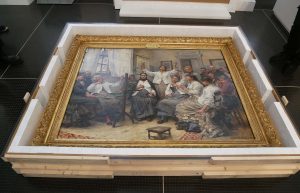
fig. 2 : Unpacking of a work loaned between museums, Dole, 2023. © Alexis Anne-Braun.
There is a distinct urgency to addressing some of these conflicts, as activist groups (Just Stop Oil, Ultima Generazione) target works of art to warn the public about coming climate disasters. Whatever the intended target, these actions aim to highlight the gap between our attitude towards the arts and our attitude towards people and the planet: making visible all the measures taken to protect the works (i.e. putting them under glass) – measures we refuse to take towards the planet and its inhabitants. “What is worth more, art or life? Is it worth more than food, worth more than justice? Are you more concerned about the protection of a painting or the protection of our planet and people?” decried one of the two young women who attacked Van Gogh’s Sunflowers at the National Gallery in London. If we want comment on this type of activism, which is not easy, intellectual honesty has to begin with acknowledging that the works targeted are under glass, and therefore not endangered. Still, this type of activism places us in an uncomfortable position, wedged between binaries: “Either save the works or save the people”. Wouldn’t it be better to think outside the box? I was thinking about this while reading Maggie Nelson’s essay, On Freedom. Four Songs about Care and Restraint.
Freedom versus care
The essay by the American poet and essayist sounds the alarm: according to her, a reversal has happened in recent years in the United States around censorship. While the more radical American right-wing claims has claimed freedom for itself – freedom to speak, to harm, to pollute, to have fun -; artists, institutions, and left-wing activists have begun to obey “the cops in their heads” – even if it means instrumentalizing art and its function and putting it at the service of a generalized care policy. It is not surprising that in this new historical configuration, a certain semantic of freedom is constantly opposed to a semantic of care: as if one could only exercise one’s freedom by taking the risk of letting others or the earth collapse, or as if taking care of others should necessarily lead to no longer taking care of oneself and one’s art.
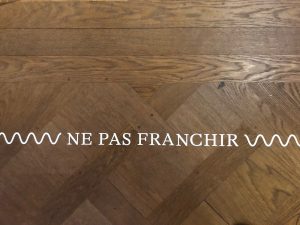
fig. 3 : Signposting in order to keep the audiences at a distance from the artworks. Musée de la chasse et de la nature, Paris 2023. © Alexis Anne-Braun.
Care policies have certainly played a decisive role in emancipation movements. Moreover, examining past abuses can also take the form of a demand for reparation. Yet Maggie Nelson worries about the consequences of enlisting art (and later on sexual morality) in this way of thinking. This explains her instinctive ‘yuck’ at the invitation in 2016 from a prestigious museum to speak at a panel on the aesthetics of care. In the first ‘song’ of her essay she sets out to examine what lies beneath the concept of artistic freedom and up to what point it is justified to set it against that of people’s vulnerability. She notes the success of what she calls an relationnal aesthetic, which seeks to answer the cries of a battered public (climate change, the epidemic, violence against women and minorities, hateful speeches which sometimes come from powerful spheres even up to the White House) – a public that wants art to heal, help and protect them. While she recognizes the strength of such an aesthetic and the truth of such a demand, just like a discourse that advocates for kindness, care and concern can also be radical, she also perceives the threat that this poses to the arts, which cannot and do not necessarily have to respond to all the demands their audience make of them.
Of particular concern to her is the shift in the viewer, who, faced with a series of practices that, in the proper context, can help heal the vulnerable and minorities, will systematically call for retribution when his or her request for solicitude is not heeded. She illustrates this by commenting on the strong reactions brought about by two works: Scaffold by Sam Durant and Open Casket by Dana Schultz. Both works are about violence committed by white people against people of color: the massacre of thirty-eight Dakota Indians in 1862 and the 1956 murder of black teenager Emmett Till. In both cases, white artists were criticized for using violence against minorities as the subject of their art. For Maggie Nelson, of course, the point is not to minimize the persistence of trauma caused by racist violence, nor to assert that an artist has absolute freedom to do everything, but to try to understand the reaction that has repeatedly led some individuals (whether or not they belong to the art world) to demand that works be removed and destroyed and thus, to put it now in Goodmanian terms, ‘deactivated’.
Maggie Nelson confronts this with the censorship historically claimed by conservatives, which may have led some to physically attack works because they did not respect the figure of God or because they conveyed morally reprehensible content. Maggie Nelson insists that, when the people’s court rules, a certain censorship or even violence is hiding behind the concept of care or protection of audiences. In the first part of the essay, we find a Maggie Nelson concerned about the fact that the concept of care can be opposed to both the concept of freedom and the protection of audiences and works of art, all against the backdrop of a rhetoric keen to separate the wheat from the chaff, to decide what is healing and what is not.
Squatting art and fixing people
Is it possible to reformulate Maggie Nelson’s reflections within the philosophical parameters offered by the concept of ‘activation’? More specifically, is the ‘Goodmanian’ concept of ‘activation’ sustainable when taking into account both the vulnerability and sensitivity of audiences and the fragility of works? And, if so, do Maggie Nelson’s writings offer us a way out of the dilemma mentioned above? It is quite obvious, to start with, that this is not easy meeting of minds. There are several reasons for this: 1) the deliberate blindness of Goodman’s philosophy to the history and sociology of art as well as to the ethical problems raised by works of art and their reception; 2) Goodman’s lack of interest in the inner life of the artist and the practice of his art (precisely at the heart of Maggie Nelson’s thinking) in favor of a cognitive approach centered on the spectator; 3) a rhetoric of determination and identity (one might say ‘essence’), which is the hallmark of the analytical style in philosophy, as opposed to a rhetoric of openness and indeterminacy, which are Maggie Nelson’s hallmarks.
Rather than seeking to bridge or widen the distance between audiences and works, Maggie Nelson insists that a work can still be healing, even for an audience it was not intended for. It is therefore not always possible (or even desirable) to anticipate in what ways a work will be meaningful to other generations and unpredictable audiences. As for me, this is one of the unpredictable outcomes of the concept of ‘activation’. A healing practice implies that people can find support in mysterious, inventive and unpredictable ways, in works that were not necessarily intended to do so. Hence the danger of dismissing works that are not immediately experienced as ‘healthy’, ‘relationnal’ or ‘consoling’.
Maggie Nelson borrows the concept of ‘de-identification’ from José Esteban Muñoz. It is a possible use for the idea of healing practice as applied to literature. When one belongs to a minority readership, de-identifying consists of squatting in the majority public sphere (the great novels of world literature, consumer products) by transforming its works for one’s own benefit and enjoyment. This can consist in reading a great classic of romantic literature from the perspective of a latent homoeroticism, by making the necessary pronoun transformations. We all do this when listening to love songs that are not meant for us.
Let us now imagine that the concept of “activation” takes into account the possibility that works of art are put to work against the intentions of the artists and those who exhibit them. This would mean that part of how a work of art functions is unpredictable, subject to historical and contextual fluctuations, and that it is therefore unnecessary to determine in advance the conditions required for it to function at its best. Of course, the dilemma of ‘protecting people or protecting art’ is not solved for where it may arise, but if we recognize that art does not have to ‘protect people’, much less save them, and if we recognize that we cannot anticipate the ways in which it might offer salvation, then part of the problem is nevertheless solved. Ultimately, we might say that a work is fully activated when it gives rise to a practice that is healing for its audience, though this is never entirely predictable and partitionnable (to use a term with strong Goodmanian connotations). At the risk of squatting in the world of Nelson Goodman’s philosophy of symbols, one could say that the unpredictable possibility that a work will begin to speak and reach out to us could be considered as one of the symptoms of aesthetics.
Bibliography
Goodman, N., ‘L’art en action’, Esthétique contemporaine, Paris, Vrin, 2005.
Esteban Muñoz, J., Cruiser l’utopie – L’après et l’ailleurs de l’advenir Queer, Dijon, Les presses du Réel, 2021.
Nelson M., De la liberté. Quatre chants sur le soin et la contrainte, Paris, éditions du Sous-Sol, 2021.
Alexis Anne-Braun is, since September 2022, a lecturer in aesthetics and philosophy of art at the ENS-Ulm. He is also a curator for both exhibitions and performances.

